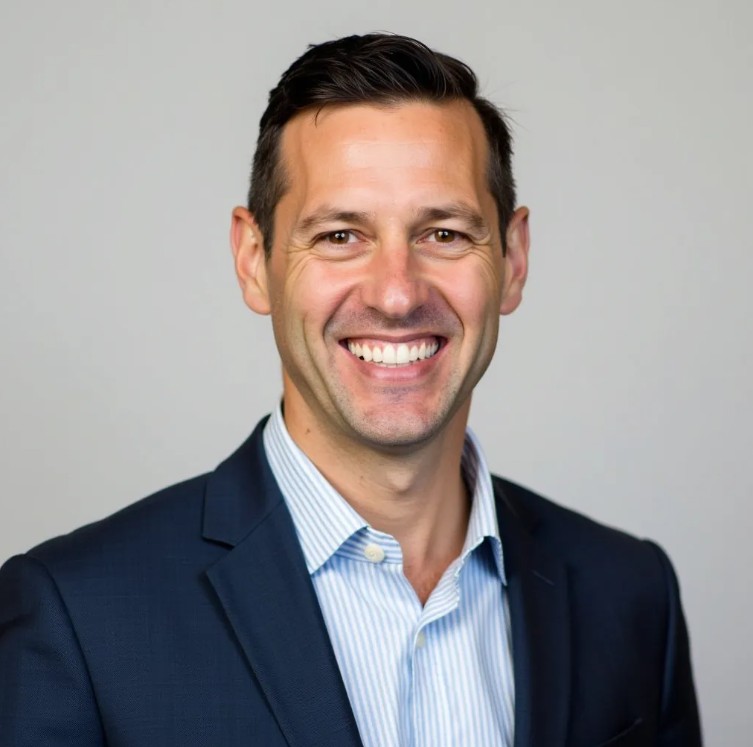
TVET in the UAE: Transforming Education Through Vocational Excellence
Reading time: 12 minutes
Table of Contents
- Introduction to TVET in the UAE
- The Evolution of Vocational Education in the UAE
- Key TVET Institutions and Programs
- Industry Alignment and Market Needs
- International Partnerships and Standards
- Navigating Challenges in the TVET Ecosystem
- Success Stories: TVET Transformations
- Future Directions: The Next Phase of TVET Development
- Your Personal TVET Roadmap: Strategic Navigation
- Frequently Asked Questions
Introduction to TVET in the UAE
Feeling overwhelmed by traditional academic paths? You’re not alone. Technical and Vocational Education and Training (TVET) in the UAE offers a compelling alternative that bridges classroom learning with practical workforce skills. But here’s what most don’t tell you: the UAE’s vocational landscape isn’t just an alternative pathway—it’s increasingly becoming the preferred route for creating job-ready professionals in a rapidly evolving economy.
The UAE’s vision is clear: by 2030, the country aims to develop one of the world’s most advanced TVET ecosystems, directly supporting economic diversification away from oil dependency. This isn’t just policy talk—it’s backed by substantial investment, with over AED 1.5 billion allocated to vocational infrastructure development in the past five years.
Let’s be straightforward: the global shift toward specialized technical skills means traditional degrees aren’t always delivering the practical competencies employers need. The UAE recognized this gap early and has engineered a vocational education system that emphasizes industry-specific capabilities while maintaining cultural and economic relevance.
“The UAE’s approach to technical and vocational education represents a pragmatic response to both global workforce trends and national economic priorities. Their model demonstrates how vocational training can evolve beyond traditional limitations to become a cornerstone of economic transformation.” — Dr. James Morrison, International Vocational Education Consultant
In the following sections, we’ll navigate the full spectrum of TVET opportunities in the UAE, examining both established institutions and emerging programs that are reshaping the educational landscape.
The Evolution of Vocational Education in the UAE
The journey of vocational education in the UAE isn’t a recent phenomenon. It began in the 1970s with modest technical schools and has transformed into a sophisticated ecosystem integrated with national development strategies. This evolution reflects the UAE’s adaptive approach to education and economic planning.
Consider this timeline of transformation:
- 1970s-1980s: Basic technical schools focusing primarily on mechanical and electrical trades
- 1990s: Introduction of more formalized vocational institutions with expanded program offerings
- 2000-2010: Strategic alignment of vocational education with economic diversification goals
- 2010-Present: Development of comprehensive TVET frameworks with international accreditation and industry partnerships
What triggered this remarkable evolution? The recognition that economic sustainability required a workforce equipped with specialized technical skills that traditional academic institutions weren’t consistently delivering. The UAE government adopted a proactive stance, viewing vocational education not as a secondary option but as a strategic economic driver.
The statistics tell a compelling story: TVET graduates in the UAE now experience 18% higher employment rates within six months of program completion compared to traditional bachelor’s degree holders in certain sectors, particularly in technical fields like advanced manufacturing, hospitality, and healthcare support services.
Quick Scenario: Imagine you’re a high school graduate interested in renewable energy technology. Traditional engineering degrees might require 4+ years of theoretical study before industry exposure. Through UAE’s TVET pathways, you could:
- Complete a 2-year specialized diploma in solar technology with hands-on training
- Participate in mandatory industry attachments with leading energy companies
- Graduate with internationally recognized certifications
- Enter the workforce with practical experience or pathway to higher education
This represents the practical advantage of the UAE’s evolved TVET approach: accelerated skill development aligned with industry needs.
Key TVET Institutions and Programs
The UAE’s vocational landscape features several established institutions, each with distinct program offerings and industry connections. Understanding their strengths and specializations is crucial for making informed educational choices.
Abu Dhabi’s TVET Landscape
Abu Dhabi stands as a pioneer in vocational excellence, with institutions structured around key economic sectors:
Abu Dhabi Vocational Education and Training Institute (ADVETI) offers programs directly aligned with Abu Dhabi’s economic priorities. What distinguishes ADVETI is its dual training system, combining classroom instruction with structured workplace learning.
Notable programs include:
- Advanced Diploma in Aircraft Maintenance Engineering (partnered with Etihad Airways)
- Health Sciences programs focused on nursing support and medical technology
- Petroleum technology certifications developed with ADNOC
The Institute of Applied Technology (IAT) takes a different approach, focusing on secondary-level technical education that creates pathways to both employment and higher education. IAT’s model integrates academic subjects with technical specializations in fields like computer technology, engineering sciences, and health sciences.
What’s particularly effective about Abu Dhabi’s approach is the continuous industry involvement in curriculum development. Program content isn’t determined solely by academic considerations but undergoes regular review by sector councils composed of major employers.
Dubai’s Vocational Education Framework
Dubai’s approach to vocational training reflects its position as a global business hub, with institutions oriented toward service excellence and technological innovation:
Dubai Institute of Design and Innovation (DIDI) represents a new breed of vocational institution, focusing on design thinking and creative industries. What separates DIDI from traditional design schools is its emphasis on practical application and industry-driven projects.
Emirates Aviation University offers specialized vocational pathways in aviation management, engineering, and pilot training. Their model combines theoretical knowledge with simulator training and industry placements.
Dubai Knowledge Park houses numerous international training providers offering vocational certifications across sectors like hospitality, business services, and information technology. This hub approach facilitates cross-pollination of ideas and standardized quality assurance.
The Dubai approach emphasizes flexibility and modular learning, allowing students to stack credentials progressively while working. This model particularly serves working professionals seeking skill enhancement without full-time study commitments.
A distinctive element of Dubai’s framework is the integration of entrepreneurial skills across vocational programs, reflecting the emirate’s emphasis on business creation and innovation ecosystems.
Industry Alignment and Market Needs
Let’s cut to the chase: the true measure of any vocational system is how well it meets actual industry needs. The UAE has developed several mechanisms to ensure this alignment:
| Alignment Mechanism | Implementation Approach | Results & Metrics | Industry Participation Level |
|---|---|---|---|
| Sector Skills Councils | Industry-led bodies that define occupational standards and skill requirements | 86% of curriculum elements directly traced to employer-identified needs | High (200+ companies actively participating) |
| Workplace Learning Requirements | Mandatory industry placements constituting 25-40% of program duration | 73% placement-to-employment conversion rate | Medium (500+ companies offering placements) |
| Industry Certification Integration | International industry certifications embedded within qualification frameworks | 92% of programs include at least one industry-recognized certification | High (aligned with global standards bodies) |
| Industry-Sponsored Training Centers | Corporate-funded facilities with industry-standard equipment and instructor secondments | 18 dedicated centers established since 2015 | Very High (direct corporate investment) |
| Rapid Response Curriculum Development | Accelerated development cycles for emerging industry needs (6-month timeline) | 32 new specialized programs created since 2018 | Medium-High (task force participation) |
What makes the UAE’s approach distinctive is the bidirectional nature of industry involvement. Rather than merely consulting employers about existing programs, institutions co-develop curriculum content and delivery methods with industry partners.
Case Study: Healthcare Technician Program
When UAE healthcare providers identified a critical shortage of specialized medical equipment technicians, the response wasn’t a generic healthcare course. Instead, a consortium of hospitals partnered with ADVETI to create a targeted 18-month program focusing exclusively on medical equipment maintenance and calibration. The curriculum was developed by practicing biomedical engineers, with 40% of instruction occurring in hospital technical departments.
The result? The program has achieved a 91% employment rate, with graduates receiving multiple job offers before completion. This responsive approach demonstrates how closely the UAE’s TVET system monitors and adapts to market signals.
International Partnerships and Standards
The UAE has strategically leveraged international partnerships to accelerate the development of its TVET ecosystem. Rather than reinventing vocational models, institutions have adapted global best practices to local contexts.
Key international partnerships include:
- UK Qualifications Framework Alignment: Many UAE vocational qualifications are benchmarked against UK standards, allowing for international recognition
- German Dual System Adaptation: Elements of Germany’s renowned apprenticeship model have been incorporated, particularly in manufacturing and engineering programs
- Australian Competency-Based Training: The structured assessment approach from Australia’s vocational system has influenced UAE’s qualification verification processes
- Singaporean Continuing Education Model: The UAE has adopted aspects of Singapore’s approach to lifelong learning and skills upgrading
These partnerships provide more than just curriculum content—they establish pathways for student mobility and qualification recognition. A technical diploma earned in the UAE now carries weight internationally, creating global career opportunities for graduates.
International Certification Success Rates (2022)
The data shows UAE students achieving strong results in international certification examinations, indicating the quality of training meets global standards. This international recognition creates tangible value for graduates entering multinational workplaces or pursuing further education abroad.
Navigating Challenges in the TVET Ecosystem
Despite its remarkable development, the UAE’s vocational education system faces several persistent challenges. Acknowledging these hurdles is essential for students and professionals making educational decisions.
Let’s address these challenges head-on:
Perception Barriers: Despite government promotion, cultural preference for university degrees remains strong. Many families still view vocational education as a lesser option, creating enrollment hesitancy among high-achieving students.
Practical Solution: Visit open houses with family members to witness advanced facilities and meet successful graduates. The reality of modern TVET institutions often dispels outdated perceptions.
Gender Imbalance: Technical programs continue to see significant gender disparities, with female enrollment below 30% in most engineering and industrial programs.
Practical Solution: Research female-focused initiatives like the “Women in Technical Fields” scholarship program by the National Qualifications Authority, which provides enhanced stipends and guaranteed internships for women entering non-traditional fields.
Qualification Recognition: Despite progress, some employers still struggle to properly value vocational qualifications compared to academic degrees.
Practical Solution: Prioritize programs with embedded industry certifications and documented employment outcomes. The additional credentials provide concrete evidence of competency beyond the diploma itself.
These challenges aren’t insurmountable, but they require strategic navigation. The most successful TVET students approach their education with clear awareness of both the advantages and potential obstacles in their chosen pathway.
Success Stories: TVET Transformations
Beyond statistics and structures, the true impact of the UAE’s vocational system is best illustrated through individual success stories. These narratives demonstrate the transformative potential of targeted technical education.
Ahmed’s Journey: From School Dropout to Energy Sector Specialist
After struggling in a traditional academic environment, Ahmed left high school at 16 with limited prospects. Through the Abu Dhabi Centre for Technical and Vocational Education and Training’s “Second Chance” program, he discovered an aptitude for electrical systems. Within three years, he completed a technical diploma in renewable energy systems, earned two international certifications, and secured a position with a solar energy provider at a starting salary exceeding many university graduates.
“The hands-on approach completely changed how I viewed education,” Ahmed explains. “Instead of memorizing concepts I couldn’t apply, I was solving real problems from the first month. The confidence this built changed everything.”
Ahmed’s story illustrates how vocational pathways can recapture educational potential that traditional systems sometimes fail to develop.
Fatima’s Career Pivot: From Administration to Specialized Healthcare
After working eight years in administrative roles, Fatima sought more meaningful and secure employment. Through a part-time vocational program at the Fatima College of Health Sciences, she completed a Diploma in Medical Laboratory Technology while maintaining her job. The program’s evening schedule and modular structure allowed her to balance work, family, and education responsibilities.
“The program was designed for working adults like me,” Fatima notes. “The instructors were actually practicing lab professionals who taught us exactly what we needed to know for the workplace. Within two months of graduating, I secured a position that increased my salary by 40%.”
Fatima’s experience demonstrates how vocational education serves not just young people entering the workforce but also professionals seeking career advancement or transition.
Future Directions: The Next Phase of TVET Development
The UAE’s vocational education system continues to evolve, with several emerging trends that will shape opportunities in the coming years:
Micro-credentials and Stackable Qualifications: The next evolution involves shorter, targeted training modules that can be combined toward full qualifications. This approach provides greater flexibility for learners and responsiveness to industry needs.
Integration of Advanced Technologies: Virtual reality training environments, AI-assisted learning, and digital simulations are being incorporated across technical programs. This trend is particularly evident in high-risk training areas like construction safety and industrial maintenance.
Entrepreneurial Focus: Newer vocational programs increasingly incorporate business development modules, reflecting the UAE’s emphasis on creating not just employees but business creators. Programs like Dubai’s “Technical Entrepreneur” initiative provide specialized support for TVET graduates launching technology-based businesses.
Sustainability Specializations: In alignment with national sustainability goals, new vocational tracks focusing on green building techniques, environmental management, and sustainable tourism have been developed. These programs respond to projected growth in the UAE’s circular economy initiatives.
These developments suggest that vocational education in the UAE will become increasingly sophisticated and specialized, continuing to close the historical gap between vocational and higher education pathways.
“The future workforce won’t be divided between vocational and academic graduates, but between those with relevant, adaptable skills and those without. The UAE’s integrated approach positions their workforce advantageously for this reality.” — Maria Fernandez, World Skills International
Your Personal TVET Roadmap: Strategic Navigation
Considering a vocational pathway in the UAE? Here’s your action-oriented framework for making informed decisions and maximizing opportunities:
- Assessment & Alignment
- Conduct a personal skills inventory identifying technical aptitudes
- Research sector growth projections using UAE Ministry of Human Resources data
- Arrange informational interviews with professionals in target fields
- Program Evaluation Checklist
- Verify institutional accreditation status with NQA (National Qualifications Authority)
- Review employment outcomes for recent graduates (request this data directly)
- Examine industry partnership strength (number of placement partners, company profiles)
- Determine international credential alignment and recognition
- Financial Navigation
- Explore industry-sponsored scholarship opportunities (particularly in priority sectors)
- Investigate part-time study options compatible with continued employment
- Compare return-on-investment metrics across program options
- Experience Enhancement
- Target supplementary certifications that complement core qualifications
- Develop digital portfolio documenting technical projects and competencies
- Build professional networks through industry association student memberships
Remember that the most successful TVET pathways often involve strategic combinations of formal qualifications, industry certifications, and practical experience. The UAE system’s flexibility allows for customized approaches that align with both personal interests and market opportunities.
How might your specific circumstances and career aspirations shape your optimal TVET journey? The possibilities are as diverse as the UAE’s economic landscape—your task is finding the intersection between your abilities, interests, and market demand.
As the UAE continues its economic transformation, those with specialized technical competencies will play increasingly vital roles. The question isn’t whether technical and vocational education offers valuable opportunities, but rather which specific pathway will best activate your potential in this dynamic environment.
Frequently Asked Questions
How do TVET qualifications compare to university degrees in the UAE job market?
In specialized technical fields, TVET qualifications often provide superior employment outcomes, with graduates experiencing 15-30% higher immediate employment rates than general bachelor’s degree holders. However, this advantage varies significantly by sector. In fields like healthcare technology, advanced manufacturing, and specialized hospitality roles, employers actively prefer vocational graduates with specific technical competencies. For management positions and professional services, university degrees typically retain an advantage. Many professionals maximize opportunities by combining both paths—starting with vocational qualifications to secure employment, then pursuing degree programs part-time with employer support.
Can international students access vocational training in the UAE?
Yes, international students can enroll in UAE vocational programs, though availability varies by institution. Government-operated TVET centers primarily serve UAE nationals, while private providers and international partnership programs typically welcome international students. The application process requires standard student visa documentation, with certain programs requiring prior technical experience or assessment tests. Tuition costs range from AED 25,000 to 75,000 annually depending on the program specialty, with technical disciplines requiring specialized equipment commanding higher fees. International students should verify post-graduation work eligibility for their chosen field, as certain strategic sectors have nationalization priorities.
What funding options exist for TVET programs in the UAE?
The UAE offers diverse funding pathways for vocational education. UAE nationals can access comprehensive government scholarships through the “Technical Skills Development Program” covering tuition and providing monthly stipends (approximately AED 3,000-5,000). International students and expatriate residents typically rely on self-funding, employer sponsorship, or private scholarships. Notable private options include the “Emirates Skills Future Workforce” initiative providing partial scholarships (covering 30-50% of costs) for high-demand technical fields regardless of nationality. Several industry associations also offer specialized funding—the Emirates Hospitality Association provides sector-specific scholarships covering 70% of program costs for culinary and hotel management students who commit to two years of post-graduation employment with member organizations.

Article reviewed by Daniel Costa, Agribusiness Analyst | Studying UAE-Brazil Trade Flows, on May 15, 2025
